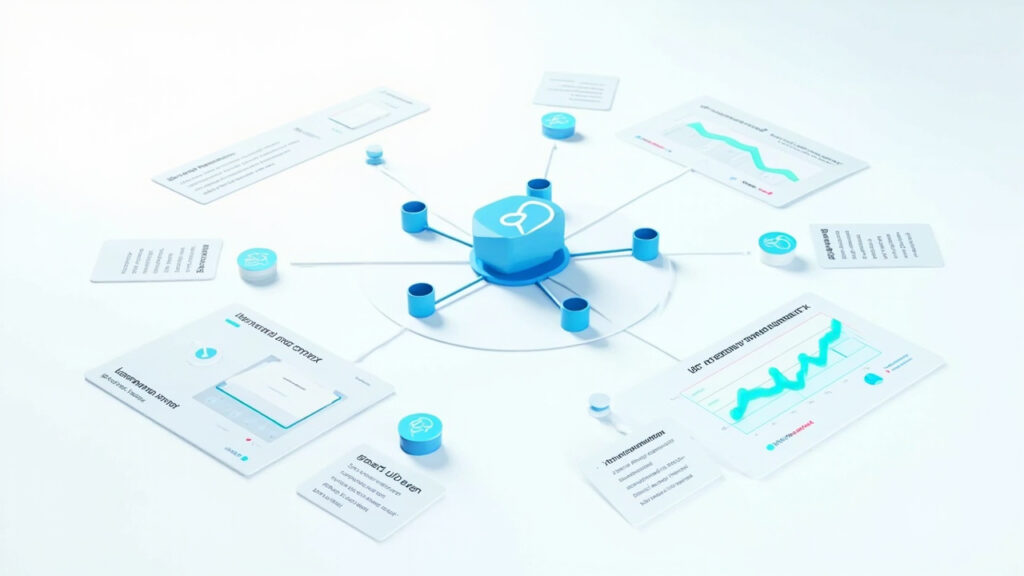In the rapidly evolving digital landscape, the essence of user-friendly software transcends mere functionality—it embodies the seamless integration of design, responsiveness, and intuitive interaction that aligns with user expectations. As we delve into the intricacies of creating software that genuinely resonates with users, we uncover the multifaceted challenges and innovative solutions pivotal to developing applications that are not only efficient but also engaging and easy to navigate. This article aims to offer a comprehensive exploration of the strategies that can elevate your software from merely functional to exceptional, ensuring a user-friendly experience that can significantly impact the success of any digital product.
Understanding the user’s perspective and integrating their feedback are foundational in crafting software that people love to use. Moreover, embracing cutting-edge tools such as GenQE, which leverages AI to revolutionize software testing, plays a crucial role in this process. By ensuring high-quality, user-centric software, developers can dramatically enhance user satisfaction and engagement, thereby driving higher adoption rates and achieving commercial success. Join us as we navigate through the principles, challenges, and best practices in creating software that truly connects with users.
The Pillars of User-Friendly Software

Creating exceptionally user-friendly software is a deliberate and detailed process that rests on several fundamental pillars. Each of these pillars addresses different aspects of the user experience, ensuring that the software not only meets but exceeds user expectations in functionality and ease of use.
Understanding User Needs and Context
The journey towards user-friendly software begins with a deep understanding of the end users—their needs, preferences, and the contexts in which they will interact with the software. This process involves comprehensive user research methodologies such as surveys, interviews, and usability testing. Developing accurate user personas and journey maps can help designers and developers empathize with the users and tailor the software’s features and design accordingly.
For instance, consider a project management tool designed for non-technical users. The development team must focus on simplifying complex functionalities, using everyday language for labels and instructions, and providing accessible tutorials and support. This approach ensures that the tool is usable and helpful to its target audience, thereby enhancing user satisfaction.
Simplified User Interface Design
A user-friendly interface is clean, intuitive, and consistent. It minimizes the cognitive load on users by reducing clutter and focusing on essential functionalities. This can be achieved through thoughtful layout design, standardized iconography, and clear, concise copywriting. For example, a well-designed e-commerce app will feature a prominent search bar, intuitive navigation, and quick checkout processes, all of which contribute to a seamless shopping experience.
The principle of simplicity also extends to aesthetic elements. A consistent color scheme and typography not only enhance the visual appeal but also contribute to a cohesive user experience across different parts of the application.
Responsive Performance
In today’s fast-paced digital world, users expect quick and responsive interactions with software applications. Performance optimization becomes critical, involving efficient code, fast loading times, and immediate feedback to user inputs. For example, a streaming service must ensure quick buffering and smooth playback to keep users engaged and satisfied.
Challenges in Developing User-Friendly Software

Developing software that effectively meets user expectations involves navigating a landscape riddled with potential pitfalls and challenges. These challenges require strategic thinking and innovative solutions to overcome.
Balancing Functionality and Simplicity
One of the most significant challenges in software development is balancing the richness of functionality with the simplicity of use. Complex software solutions need to offer advanced features without overwhelming the user. This balance can be achieved through modular design, where advanced features are hidden under intuitive interfaces or are made accessible through progressive disclosure techniques.
For instance, a photo editing software can offer basic features on the main screen and advanced settings in secondary menus. This design allows novice users to easily understand and use the software while providing professionals with the sophisticated tools they need.
Ensuring Cross-Platform Consistency
The diverse range of devices and operating systems used today requires software to be versatile and consistent across all platforms. This uniformity ensures that users have a seamless experience transitioning from one device to another. Achieving this involves rigorous testing and a responsive design philosophy that adapts to different screen sizes and input methods.
For example, a note-taking app should provide a consistent user experience whether accessed via a smartphone, tablet, or web browser. This consistency includes synchronized content updates, similar layout structures, and uniform functionality.
Handling User Feedback and Changes
User feedback is an invaluable resource in the iterative process of software development. Managing and integrating this feedback effectively can be challenging, especially when it requires significant modifications to the software’s structure or functionality. Agile development methodologies, which incorporate regular testing and feedback loops, can help teams adapt to user needs more dynamically.
Leveraging AI and Machine Learning

The integration of AI and machine learning technologies has brought a paradigm shift in how user-friendly software is developed. These technologies not only enhance personalization and predictive capabilities but also improve the efficiency and effectiveness of the development process.
Personalization Through AI
AI-driven personalization involves using algorithms to analyze user data and tailor experiences to individual preferences. This capability allows software to offer more relevant content, predict user needs, and provide customized interactions. For example, a music streaming service uses AI to analyze listening habits and recommend songs or artists that the user is likely to enjoy, thus enhancing user engagement and satisfaction.
Machine Learning for Predictive Features
Machine learning models can predict user actions based on historical data, allowing software to anticipate user needs and respond proactively. This predictive capability can lead to more intuitive user interfaces, where options and resources are presented to users based on their predicted needs, thereby simplifying their tasks and saving time.
For instance, a financial app might use machine learning to predict a user’s monthly spending habits and proactively provide budgeting tips or alert the user about potential overspending.
AI-Driven Testing and Quality Assurance
Incorporating AI in testing and quality assurance can significantly enhance the reliability and user-friendliness of software. Platforms like GenQE leverage AI to automate the generation and execution of test cases, ensuring comprehensive coverage and quick identification of potential issues. This automation not only speeds up the testing process but also helps in maintaining a consistent level of quality throughout the software’s lifecycle.
Best Practices in UI/UX Design

The design of the user interface (UI) and user experience (UX) plays a pivotal role in determining the user-friendliness of software. Following best practices in UI/UX design ensures that the software is not only functional but also enjoyable to use.
Consistency and Familiarity
Maintaining consistency in design elements such as colors, fonts, and layout structures across the software helps reduce the learning curve for users. Familiarity with common design patterns and controls (like swiping gestures on mobile devices or dropdown menus on web pages) also makes the software more intuitive.
For example, if users are accustomed to swiping left to delete an item in other apps, they will likely expect the same gesture to perform a similar function in a new app they are using. Consistency in these design elements and interactions builds a sense of familiarity and ease of use.
Accessibility
Ensuring that software is accessible to people with disabilities is not only a legal requirement in many regions but also a moral and commercial imperative. Accessibility features such as screen reader support, keyboard navigation, and high-contrast visual elements make the software usable for a broader audience, including those with visual, auditory, motor, or cognitive disabilities.
For instance, adding alt text to images and providing closed captions for videos are simple yet effective ways to make digital content more accessible to users with visual and hearing impairments, respectively.
Feedback and Interaction
Effective feedback mechanisms communicate the results of user interactions and reassure users that their inputs have been successfully processed. Visual indicators such as loading spinners, sound alerts, and haptic feedback can significantly enhance the user experience by providing timely and relevant feedback.
For example, a confirmation message after a successful transaction or a vibration alert when a download starts can provide users with immediate and clear feedback about their actions.
Integrating with Development Ecosystems

A user-friendly software application should seamlessly integrate within the larger ecosystem of technologies and platforms that its users rely on. This integration enhances the functionality and appeal of the software, making it a more valuable tool for the user.
Compatibility Testing
Compatibility testing is critical to ensuring that software performs well across various devices, operating systems, and browsers. Automated testing tools like GenQE can efficiently manage these tests, identifying inconsistencies and potential issues that could disrupt the user experience. This level of thorough testing is essential for maintaining a high-quality user experience across all platforms.
Third-Party Integrations
Software often needs to interact with other applications or services to enhance its functionality. Smooth integration with third-party APIs and services can extend the capabilities of the software, providing users with a more comprehensive and convenient experience. For example, integrating a social media management tool with platforms like Twitter, Facebook, and Instagram allows users to manage all their social interactions from a single interface, simplifying their workflow and saving time.
Continuous Updates and Support
Regular software updates not only add new features and functionalities but also address bugs and security vulnerabilities that could compromise user experience and data security. Providing continuous support through helpdesks, user forums, and direct customer service can also help resolve user issues promptly, ensuring a smooth and continuous user experience.
Conclusion: The Future of User-Friendly Software

As technology continues to advance, the expectations for user-friendly software will evolve, necessitating continuous innovation and adaptation by developers. The integration of advanced technologies like AI and machine learning is already making it easier to create applications that are not only powerful but also intuitive and engaging. These technologies offer exciting possibilities for personalization, predictive features, and automated testing, all of which can significantly enhance the user experience.
The journey towards creating user-friendly software is ongoing and dynamic. It challenges developers to stay on the cutting edge of technology and design trends, continuously seeking ways to better understand and serve their users. By embracing these challenges and focusing on the needs and preferences of users, developers can create software that not only meets but exceeds expectations, ensuring both user satisfaction and commercial success.
Platforms like GenQE represent a significant leap forward in this journey, providing developers with powerful tools to ensure the quality and reliability of their software. By leveraging such advanced technologies, developers can more effectively meet the demands of modern users and create software that stands out in a crowded market.
In this dynamic landscape, the potential for creating truly user-friendly software is limitless. Whether you are a seasoned developer or just starting out, the path to success lies in focusing on the user, leveraging the right technologies, and adhering to best practices in design and development. The rewards—satisfied users and successful products—are well worth the effort.
Discover More Innovative Solutions
Want to learn more about the tools and technologies discussed in this article? Explore how these innovations can be tailored to your specific needs and workflow requirements.
Our team of experts is available to answer your questions and provide personalized insights into how modern solutions like GenQE can address your specific challenges.